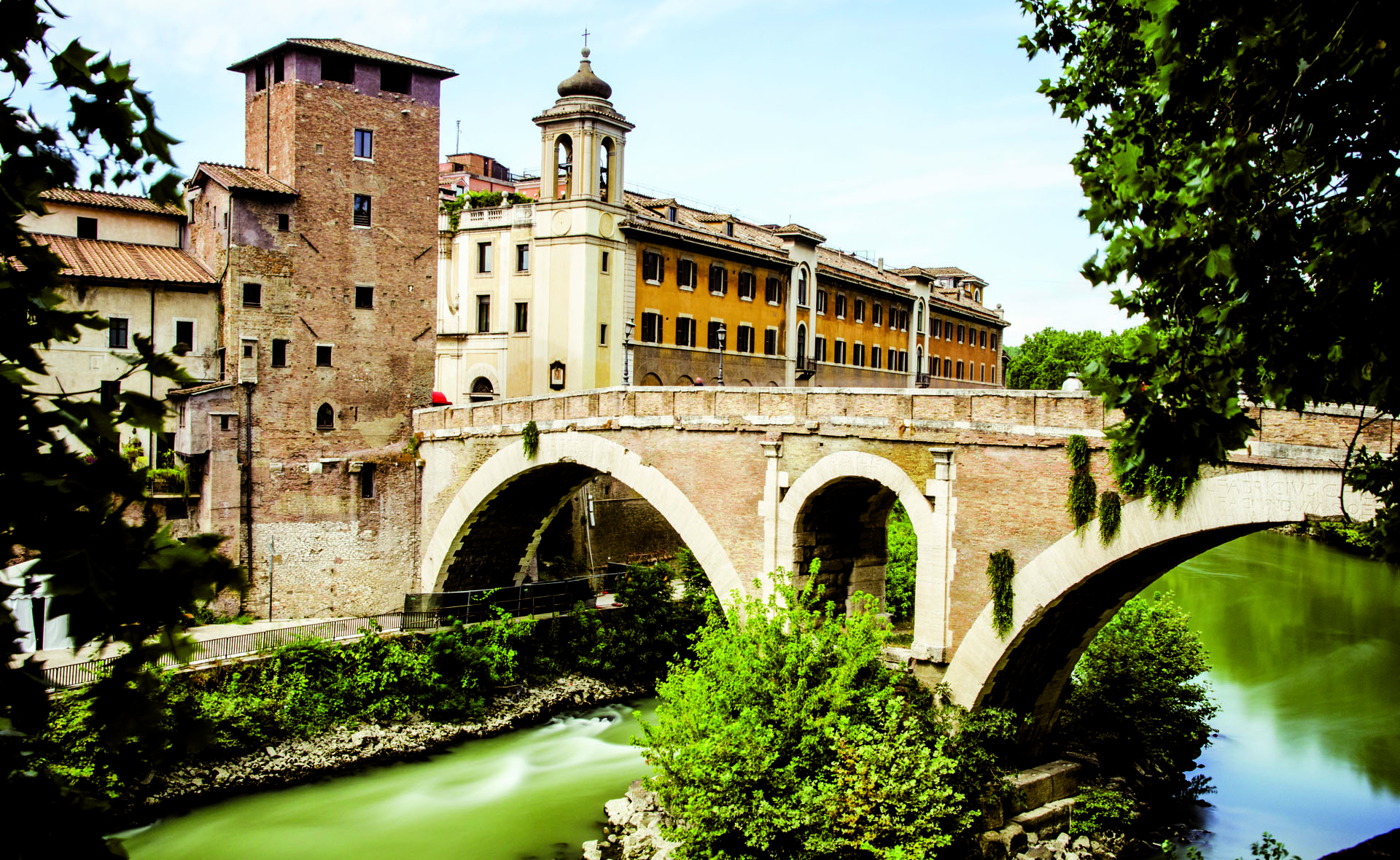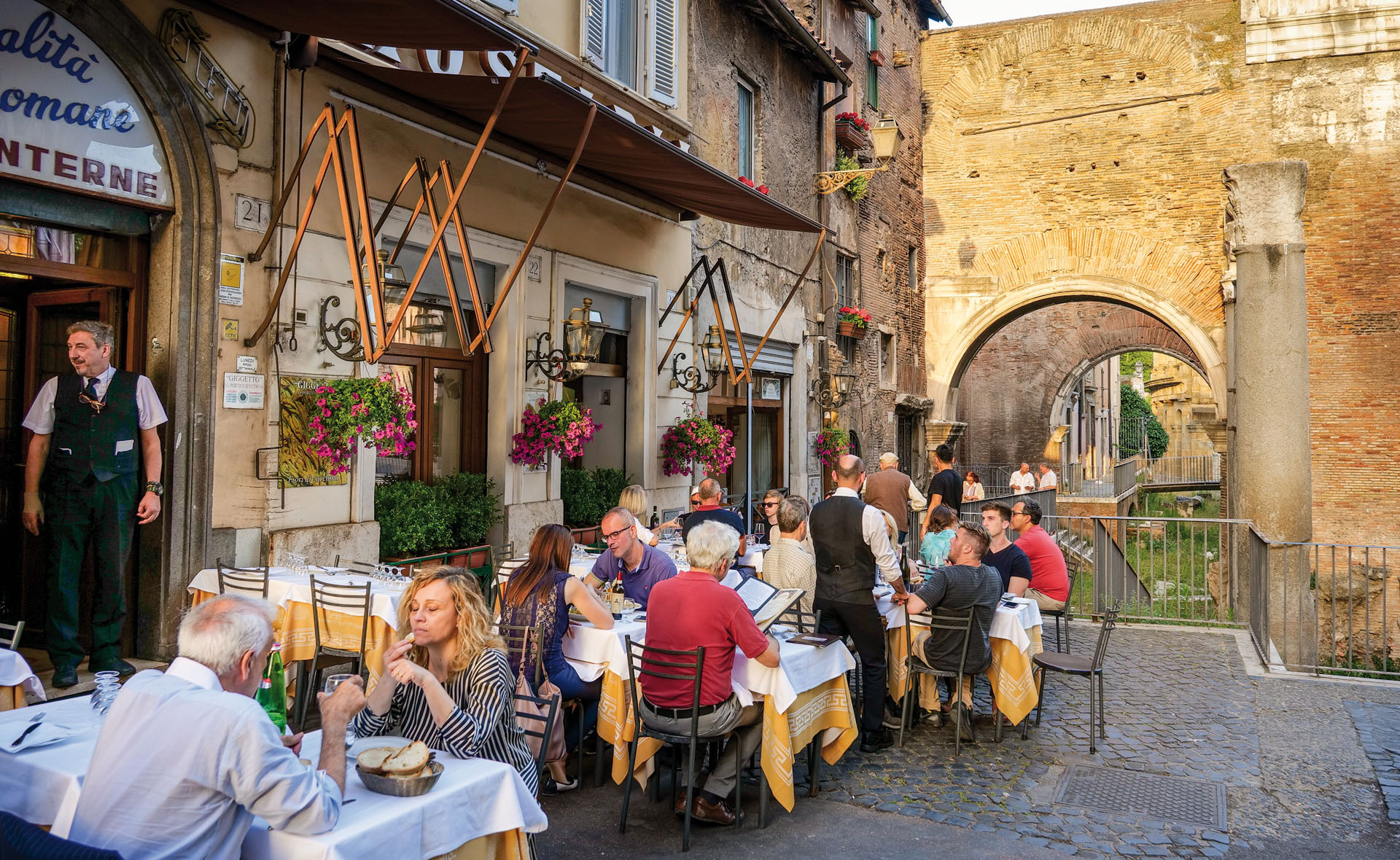It’s rich in history, memory and hidden treasures. Every alley, every view make this place one of the most beautiful and most visited in the city.

T he Ghetto has a unique and lively atmosphere. Our walk starts from the Teatro di Marcello, finished in 13 BC
by Augustus, who dedicated it to his nephew Marco Claudio Marcello. It is a wonderful structure, the only ancient theatre left in Rome, which has undergone significant transformations over the years. In the sixteenth century, Baldassarre Peruzzi erected the noble palace that still exists today on behalf of the Savelli family, later purchased by the Orsini family.
Continuing through enchanting alleys, you reach the Portico d’Ottavia, the main entrance to the old Jewish ghetto. Built in 23 BC by Augustus in honour of his sister Octavia, in medieval times it was used as a fish market. Even today it is possible to read the Latin inscription which, translated, reads: «The heads of all the fish that exceed the length of this plaque, up to the first fins included, must be given to the Conservatories of the Capitol».
Here stands the Church of Sant’Angelo in Pescheria, named after the market. This church was the scene of a historical episode: the leader Cola di Rienzo and his revolutionary followers watched over it on the night of 20 May 1347, before leaving to conquer the Capitol. The church, without a facade, has three naves inside. In relief, at the end of the left nave, a fresco by Benozzo Gozzoli depicts a Madonna with Child and Angels.
This brings us to Piazza delle Cinque Scole, which owes its name to the five rabbinical schools, demolished to allow the construction of the Tiber walls that still protect the city from floods. This is where, in the early twentieth century, the monumental Synagogue was built, the largest Jewish temple in Europe and the most impressive symbol of the redemption and acquired freedom of the Roman Jewish community. Inside you can visit the Jewish Museum, opened in 1960 to preserve the testimonies of the Jewish community of Rome together with precious finds such as silver, textiles, marble and parchments.
A few steps away is Piazza Campitelli with its travertine fountain designed by Giacomo Della Porta, which forms the backdrop to the Church of Santa Maria in Campitelli, one of the most superb expressions of the Baroque period. In the seventeenth century this church was rebuilt by the architect Carlo Rainaldi and, for the occasion, the sacred icon of Santa Maria in Portico, considered miraculous and thaumaturgical, was transported there. In the side chapels, there are works by Baroque painters such as Sebastiano Conca and Luca Giordano.
Not far from here, strolling through narrow streets dotted with restaurants and tasteful shops, you will reach Piazza Mattei, where the Fontana delle Tartarughe stands, which owes its name to four turtles located on the edge of the upper basin, attributed to Gian Lorenzo Bernini.
The walk ends with the Fabricio Bridge, or “Bridge of the four heads”, because of the four-sided herms that likely once supported the original bronze balustrades. Crossing it, you arrive at Tiber Island, a real urban oasis.

Jewish-Roman cuisine is a narrative that projects love for tradition.
A fascinating fusion between the culinary influences dictated by the precepts of the Jewish religion and the various geographical origins of the members of this community, kosher cuisine (meaning “what is allowed”) is an explosion of flavours and fragrances. Walking through the streets of the Ghetto, you must stop at one of the many historic taverns to sample the famous Giudia artichokes or fried courgette flowers, but also other delicacies, such as anchovies with endive, beef jerky strips and potato and tuna meatloaf. Desserts abound, often based on dried fruit and honey, together with the ricotta and sour cherry tart. A riot of treasures for gourmet travellers.
